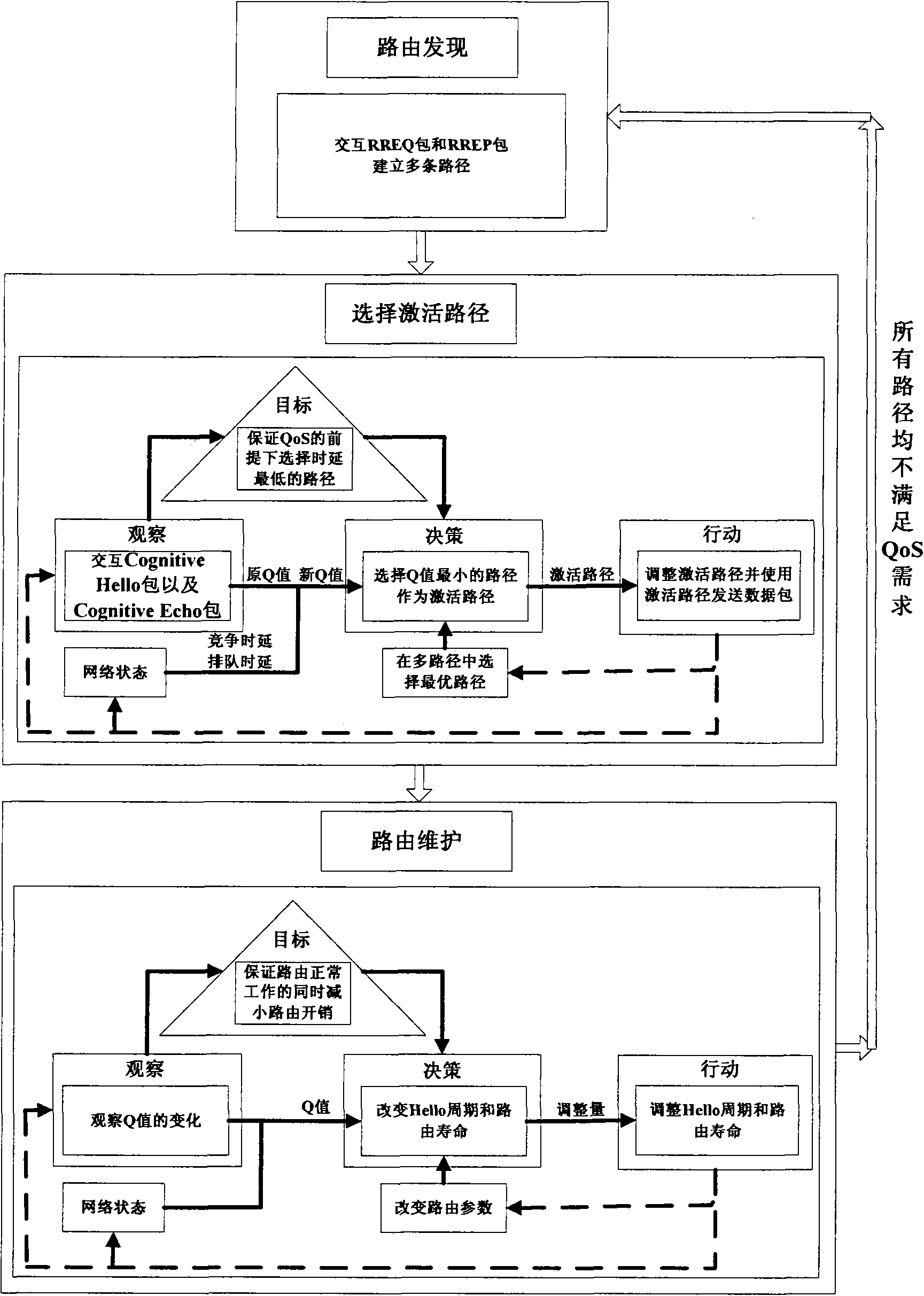Multi-path delay sensing optimal route selecting method for cognitive network
A cognitive network and multi-path technology, applied in the field of cognitive multi-path optimal routing, can solve problems such as the inability to accurately learn the current state of the network, the low accuracy of the perception results, and the rough delay.
- Summary
- Abstract
- Description
- Claims
- Application Information
AI Technical Summary
Problems solved by technology
Method used
Image
Examples
example
[0105] refer to Figure 7 , the small arrows on the path in the example of the present invention indicate that each node interacts with the cognitive inquiry CognitiveHello packet and the cognitive response Cognitive Echo packet to transmit the Q value, and the CH and CE marked on the small arrow represent the Cognitive Hello packet and Cognitive Echo packet respectively. Figure 7 The time axis in is marked with the change of the selected path and route life over time. The specific process is described as follows:
[0106] Assume that the source node S has a voice service with a priority of 2 to be sent to the destination node D at a certain moment. The source node S queries the routing table and finds that there is no routing entry to the destination node D, and initiates a route discovery process. After the route discovery process, the source node establishes three paths to reach the destination node D successively, which are path S-A-D, path S-B-C-D, and path S-E-F-D. O...
PUM
 Login to View More
Login to View More Abstract
Description
Claims
Application Information
 Login to View More
Login to View More - R&D
- Intellectual Property
- Life Sciences
- Materials
- Tech Scout
- Unparalleled Data Quality
- Higher Quality Content
- 60% Fewer Hallucinations
Browse by: Latest US Patents, China's latest patents, Technical Efficacy Thesaurus, Application Domain, Technology Topic, Popular Technical Reports.
© 2025 PatSnap. All rights reserved.Legal|Privacy policy|Modern Slavery Act Transparency Statement|Sitemap|About US| Contact US: help@patsnap.com



